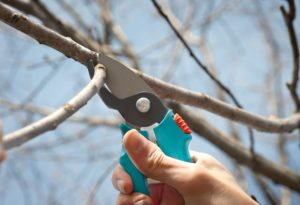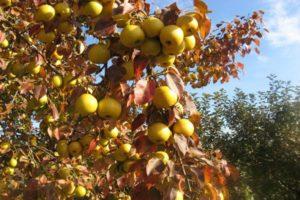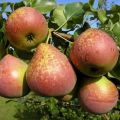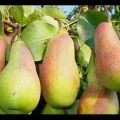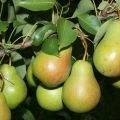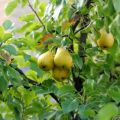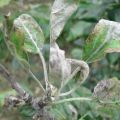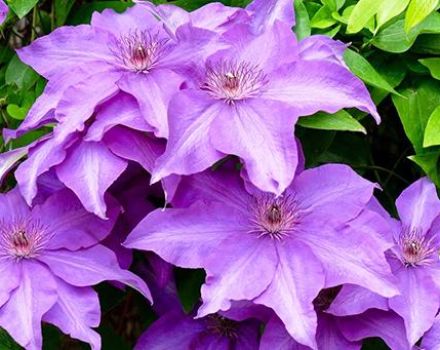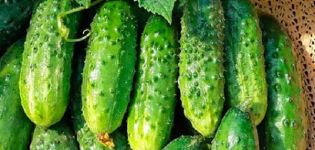Description and characteristics of the cathedral pear variety, cultivation and pollinators
Most people cannot indifferently pass by a juicy fragrant pear. Excellent taste, unpretentious planting - all this makes the pear popular among gardeners. The abundance of varieties of pear trees allows you to grow fruit in different regions, even where you could only dream of it before. The cathedral pear variety belongs to the familiar, high-yielding varieties, which are distinguished by winter hardiness and excellent taste characteristics.
History description and characteristics of the Cathedral pear
This is the fruit of the work of domestic breeders. ST Chizhov and SP Potapov, scientists of the Agricultural Academy of Moscow, began to develop the variety; in 1990 it was tested. In 2001, the variety was included in the Russian State Register.
A not too tall tree with a conical crown is characterized by sparse branches, with tips slightly curved upwards.
The color of the skeletal branches is gray, the bark is smooth, the young shoots are reddish-brown, with a slight edge.
A pear tree with medium-sized leaves, slightly serrated, with a sharp tip. They are bright, light green, with a shiny glossy surface. The flowers are large, with slightly concave petals, delicate white.
Fruits weighing 120-140 grams, the flesh is tender and juicy, with a slight sourness. Perfect for drying, compotes, making jams and preserves. The fruits have a smooth, shiny skin and are green or slightly yellow. This variety needs pollination for good yield. Pears of the varieties Lada, Detskaya are the best pollinators for the Cathedral.
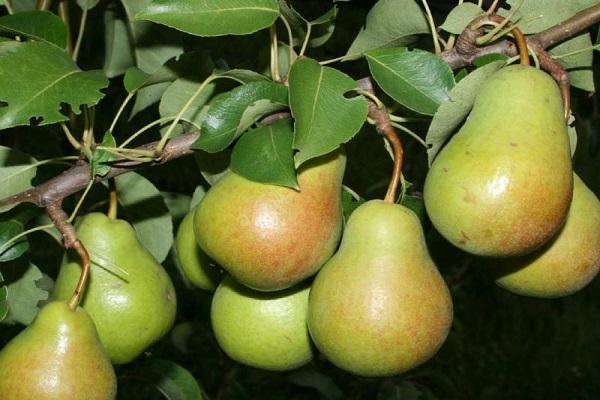
Advantages and disadvantages
The advantages of the Cathedral pear are obvious to any gardener:
- high frost resistance;
- good productivity;
- disease resistance;
- early fruiting (for 3-4 years of planting).
The disadvantages are not so obvious, which is why this variety is popular with gardeners in the Middle Strip, it is grown in the south and in the Ural regions.
The disadvantages include:
- modest size;
- insufficient keeping quality of fruits;
- ripe fruits beat during transportation.
Moreover, they are very tasty, suitable for processing, the variety is used for industrial cultivation.
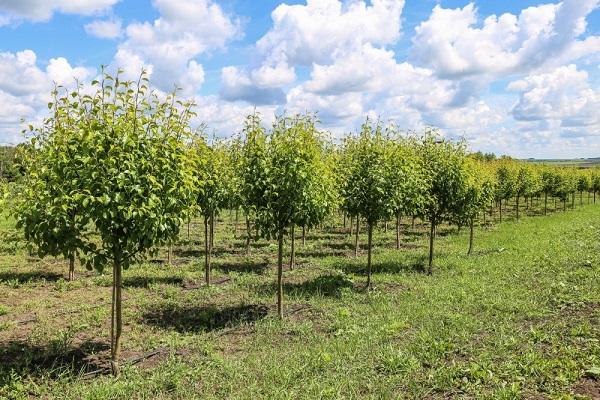
How to plant a pear correctly
Seedlings of fruit trees should be bought in nurseries - they sell varietal plants, if you purchase low-quality planting material, you can return the purchase.
Terms of planting works
The tree can be planted in spring and autumn. Autumn planting gives great frost resistance, with spring planting - the seedling manages to get stronger before the onset of cold weather. In spring, a pear is planted from the third decade of March to mid-April, in autumn - in September-October, so that the tree has time to adapt to frost.
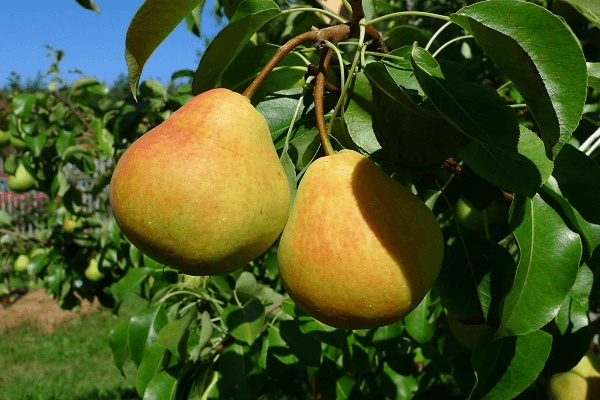
Seat selection
The pear needs a sunny, sheltered place with light soils. She does not tolerate heavy soil and high humidity.
Important: the tree cannot stand the neighborhood with the mountain ash, it is better to plant it next to the apple tree.
For planting, choose 1-2-year-old strong seedlings with a developed root system, without damage, with a smooth and shiny bark. There should be no dry areas or spots on it.
Landing scheme
The day before planting, the roots are soaked in a mullein solution.
A hole is dug with a diameter of 1 meter and a depth of 40-50 centimeters. It is being prepared in advance, in the fall. For autumn planting - 3-4 weeks before the event, for spring planting - before the onset of frost.

Before planting, the bottom of the hole is loosened, a mixture of complex potassium-phosphorus fertilizer and compost is applied. A mound is poured at the bottom of the pit, over which the roots of the seedling are evenly distributed.
The hole is covered with soil, it is tamped well, leaving the root collar 3-5 centimeters above the soil surface.
The plant is watered, the soil around is mulched, the seedling is tied to supports, the pegs are at an equal distance from the seedling and do not allow the planting to slope.
How to care for a variety
To get good yields, 2-3 pear trees are planted nearby, which provide cross-pollination.
The pear does not grow well in lowlands, with a close occurrence of groundwater, reacts negatively to dampness, so the plantings should be well ventilated.
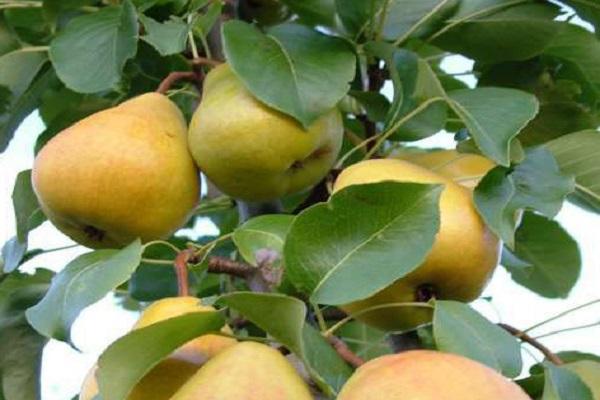
Soil care
The plant prefers light fertile soils, pear roots are deep, therefore they withstand slight moisture retention. On acidic soils around the seedling, a small amount of wood ash is applied.
Watering
Water the seedlings once a week. Watering requires 10-20 liters of not too cold water. An adult tree is watered 1-2 times a month. The soil is loosened and mulched well.
Pruning
Trees are pruned to properly form the crown, get rid of old or diseased branches, to rejuvenate the tree. The shaping crown trimming should be entrusted to specialists.
To rehabilitate the tree, it is pruned after the foliage is dropped and in early spring. Remove the affected branches that make the crown too thick.
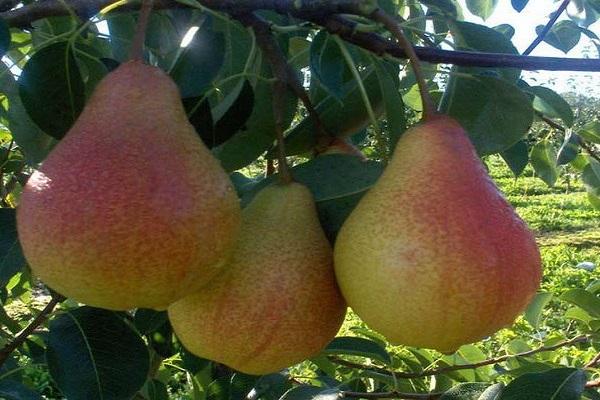
Whitewash
Before whitewashing, the trunk is cleaned of dead pieces of bark, lichens and moss. Hands, dressed in household gloves, carefully clean the barrel. Be sure to clean the bottom of the trunk and the base of the skeletal branches. The application of lime protects the tree from diseases and pests. Saplings are whitened with a less concentrated solution.
Important: whitewashing is carried out using safety glasses and rubber gloves. Lime is highly corrosive to the skin and causes serious eye injury.
The trunk and bases of the skeletal branches are processed. Whitewashing is carried out in the fall - after leaf fall and in spring - after the snow melts.
Fertilizers
The soil is fertilized with organic matter every 3-5 years - a complex mineral fertilizer is mixed with the soil and introduced into shallow trenches dug in a spiral around the tree. The crown width will adjust the fertilizer application diameter.
The pear does not like nitrogen, they should be fertilized when absolutely necessary (a sharp slowdown in growth, a decrease in yield).
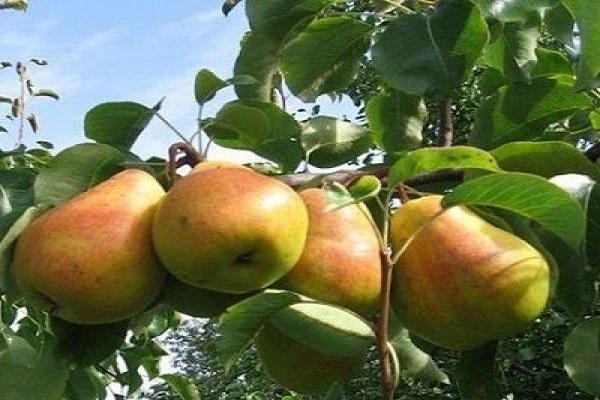
How to protect a pear from frost
Young saplings of Cathedral are sheltered from frost by wrapping the trunk with burlap, which is impregnated with diesel fuel, dust, and other preparations for mice.The root zone is also insulated using straw, which should be mixed with herbs that repel mice (tansy, mint, wormwood). Snow around the seedling is well crushed.
Pests, diseases and control of them
Cathedral pear is resistant to most pests and diseases, but it definitely needs additional processing.
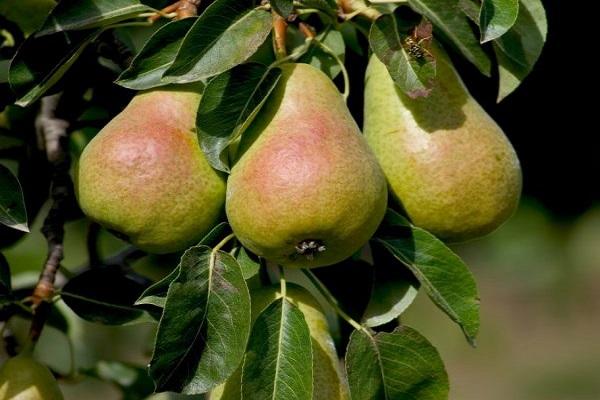
Diseases characteristic of the Cathedral
The pear is susceptible to fungal diseases. Plants can get sick:
- Powdery mildew. It is characterized by a white bloom on the leaves and fruits, from a distance they seem to be powdered with flour. The disease affects other fruit trees. Affected leaves curl up, dry up and fall off. The fruits rot and crumble.
- Moniliosis. Monilial burn and fruit rot, which are characteristic of this disease, develop easily and spread in warm weather and high humidity.
- Black or sooty fungus. The disease leads to blockage of pores and death of leaves. Deprived of greenery, the tree quickly dies. If fungal plaque is found, watering should be reduced.
- Rust on the leaves. The disease is characterized by the presence of a reddish-rusty coating on the leaves. Holes form on the leaves, they dry out and fall off.
For protection against fungal diseases, Bordeaux liquid or suitable fungicides of complex action (Topaz, Horus) are used. Processing is carried out in the spring, before bud break. A second treatment is required before flowering.
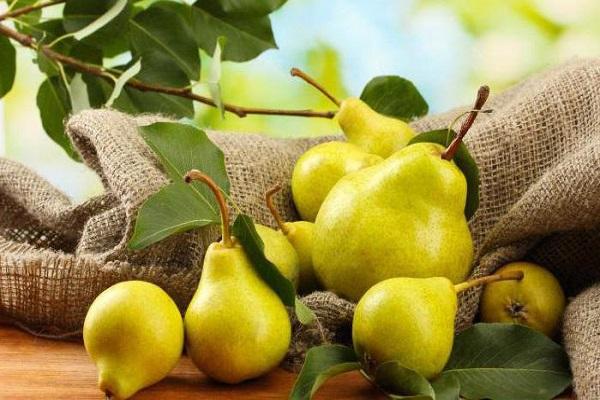
To protect the tree from diseases, the root circles are cleaned of weeds. Fallen leaves, diseased fruits and cut off diseased branches must be carried away from the tree and burned.
The saboteurs attacking the Cathedral
The pear can suffer from aphids, weevils, various types of caterpillars and butterflies (hawthorn, honeydew). For protection use insecticidal solutions, spraying with infusion of wormwood, tansy, tobacco dust. To keep the solution well on the leaves, add laundry soap to it.
Insecticides are used in full accordance with the manufacturer's recommendations, using protective equipment for the hands, respiratory tract, using tight clothing with long sleeves when processing.
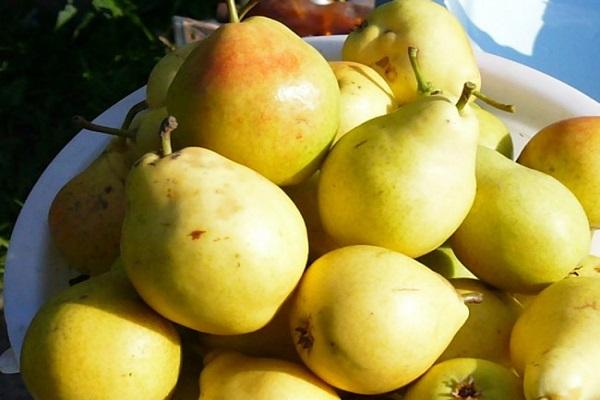
What regions is the variety more adapted to
The Kafedralnaya variety was bred for Central Russia. Today it has spread to more southern and northern regions. The tree feels great in the Rostov region and in the Middle Urals. Cathedral is growing well in the suburbs.
Ripening and storage of fruits
Pear Cathedral belongs to the summer varieties. In sunnier regions, fruits ripen faster - at the end of August, cold regions harvest in September. Collect the fruits by hand so as not to crush the delicate juicy fruits.
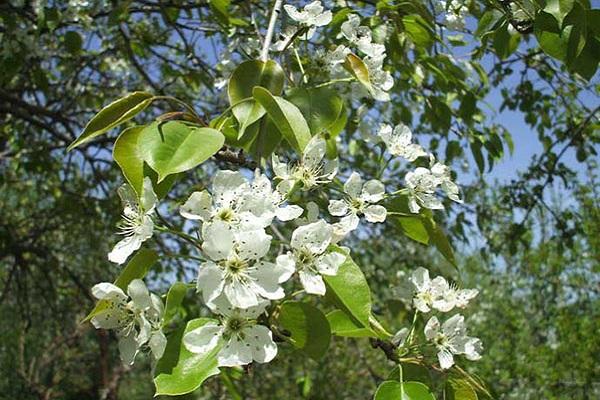
Delicious compotes are made from them, they are consumed fresh, juices and jams are prepared.
Cathedral pear, with ease of care and unpretentiousness, is capable of producing good harvests. That is why the variety is so loved by Russian gardeners.
